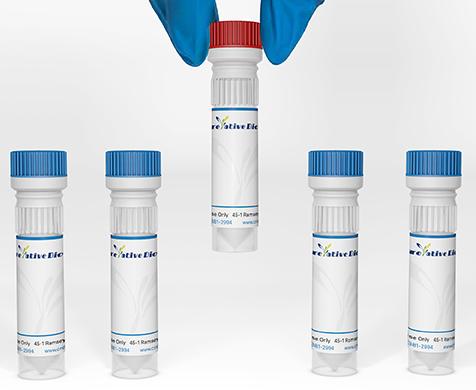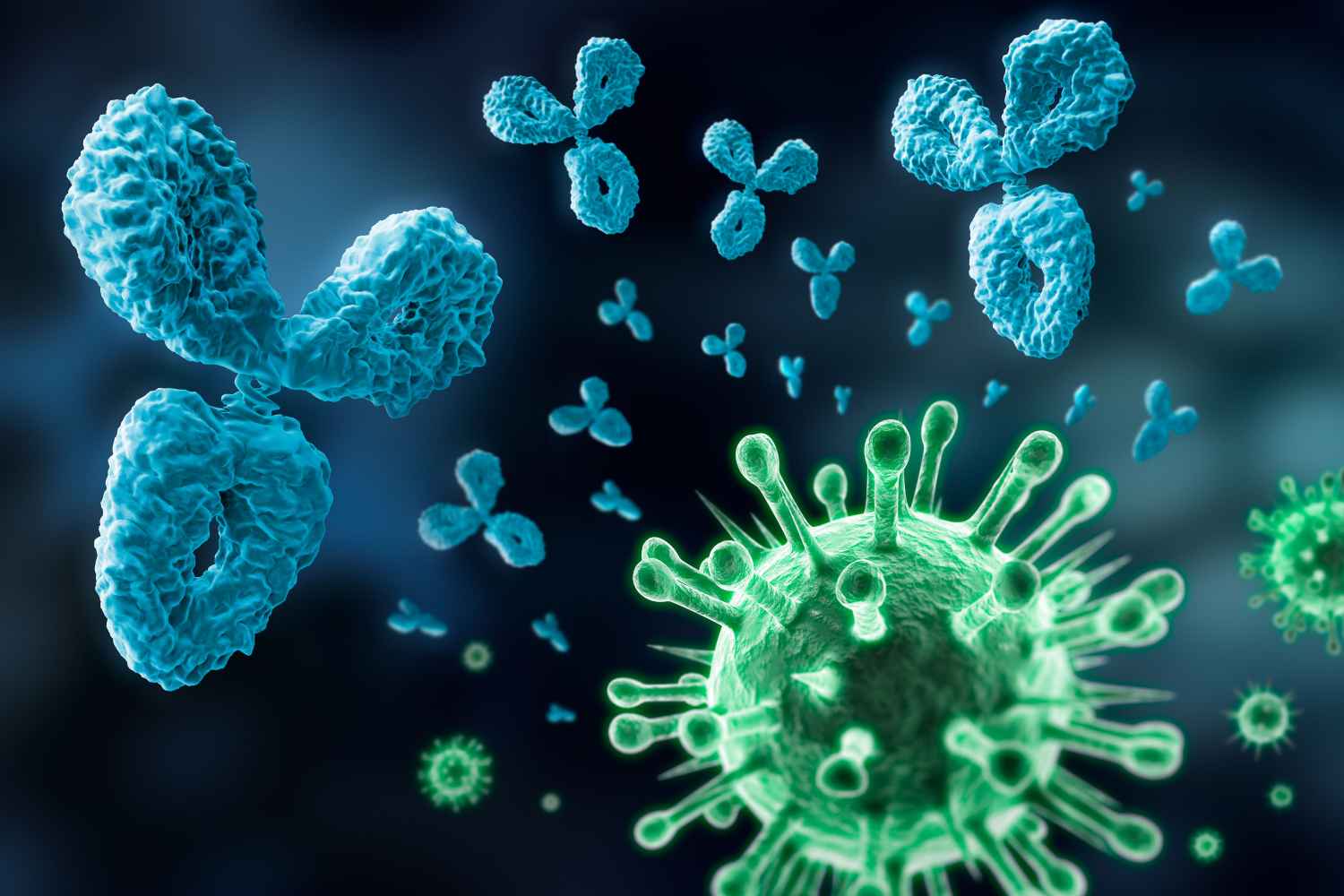Substance P Antibodies
Background
The main occurrence of undecapeptide substance P takes place in nervous system tissues and peripheral tissues. The neuropeptide functions as both a neurotransmitter and neuromodulator. Ulf von Euler and John H. Gaddum discovered this neuropeptide in 1931. The substance P functions as a pain signal transmitter while controlling gut movement and immune cell responses.
Structure of Substance P
Substance P is a peptide composed of eleven acids, with a weight of around 1,300 Daltons (Da). The specific sequence of acids in Substance P is Arg Pro Lys ProGln Gln Phe Phe Gly Leu Met NH2 and slight variations in its molecular weight can occur across species due to variances, in amino acid sequences and post translational modifications.
The linear peptide structure of Substance P exists as a short peptide chain. The molecule lacks both globular structure and alpha-helical features which myoglobin possesses. The peptide structure of Substance P lacks heme-like prosthetic groups that are embedded within its structure. The biological activity of Substance P depends on its interaction with specific receptors including the NK1 receptor to transmit pain signals and control various physiological processes.
Key structural properties of Substance P:
- Linear undecapeptide sequence
- No alpha-helices or globular form
- Specific binding to NK1 receptor
- Conserved across species
- Neurotransmitter and neuromodulator
Functions of Substance P
Substance P plays a role in transmitting and regulating pain signals, within the system but also contributes to controlling gut movement and immune system reactions.
| Function | Description |
| Pain Transmission | Acts as a neurotransmitter to transmit pain signals from sensory neurons to the central nervous system. |
| Inflammation Regulation | Modulates inflammatory responses by influencing immune cell activity and cytokine release. |
| Gut Motility | Regulates gastrointestinal motility and secretory functions. |
| Immune Response | Affects immune cell migration and activation, contributing to immune responses. |
| Neurogenic Inflammation | Promotes vasodilation and plasma extravasation in the skin and mucous membranes. |
The impact of Substance P, on pain receptors occurs quickly and directly when compared to the more effects of endorphins; this suggests its significant involvement, in signaling immediate pain responses.
Applications of Substance P and Substance P Antibody in Literature
1. Humes, Charles, Aleksandar Sic, and Nebojsa Nick Knezevic. "Substance P's impact on chronic pain and psychiatric conditions—a narrative review." International journal of molecular sciences 25.11 (2024): 5905. https://doi.org/10.3390/ijms25115905
The article identifies Substance P as a critical pain mediator in psychiatric conditions and presents a highly specific recombinant rabbit anti-Substance P monoclonal antibody which demonstrates extensive species cross-reactivity and strong diagnostic potential for therapeutic use in pain and mental health disorders.
2. Esteban, Francisco, et al. "Substance P and neurokinin 1 receptor in chronic inflammation and cancer of the head and neck: A review of the literature." International Journal of Environmental Research and Public Health 19.1 (2021): 375. https://doi.org/10.3390/ijerph19010375
The article discusses the significance of Substance P and its receptor called the 1 receptor, in inflammation and head and neck cancer. It introduces affinity recombinant rabbit antibodies targeting Substance P and the neurokinin 1 receptor that show wide species reactivity and strong diagnostic capabilities. These antibodies could potentially be used as targets, for diseases related to these conditions.
3. Ko, Kyung Rae, et al. "Substance P, a promising therapeutic target in musculoskeletal disorders." International Journal of Molecular Sciences 23.5 (2022): 2583. https://doi.org/10.3390/ijms23052583
The article discusses Substance Ps significance, in conditions. Presents a highly effective recombinant rabbit antibody targeting Substance P that shows wide reactivity across species and promising diagnostic capabilities for potential use as a therapeutic option, for associated ailments.
Creative Biolabs: Substance P Antibodies for Research
Creative Biolabs excels in producing premium Substance P antibodies for research and industrial use. Our range features monoclonal and polyclonal antibodies optimized for ELISA, Flow Cytometry, Western blot, immunohistochemistry, and other diagnostic techniques.
- Custom Substance P Antibody Development: Customized solutions to meet specific research needs.
- Bulk Production: Large-scale manufacturing of antibodies for industry partners.
- Technical Support: Professional consultation for optimizing protocols and troubleshooting.
- Aliquoting Services: Pre-measured aliquots for long-term storage and consistent results.
For further details on our Substance P antibodies, custom preparations, or technical support, please contact us via info@creative-biolabs.com.
Anti-Substance P antibodies
 Loading...
Loading...
Hot products 
-
Mouse Anti-ABCA3 Recombinant Antibody (V2-178911) (CBMAB-A0145-YC)

-
Mouse Anti-DMPK Recombinant Antibody (CBYCD-324) (CBMAB-D1200-YC)

-
Mouse Anti-CDKL5 Recombinant Antibody (CBFYC-1629) (CBMAB-C1689-FY)

-
Mouse Anti-BMI1 Recombinant Antibody (CBYC-P026) (CBMAB-P0108-YC)

-
Mouse Anti-ACTG1 Recombinant Antibody (V2-179597) (CBMAB-A0916-YC)

-
Mouse Anti-ALB Recombinant Antibody (V2-180650) (CBMAB-A2186-YC)

-
Rabbit Anti-CCL5 Recombinant Antibody (R0437) (CBMAB-R0437-CN)

-
Mouse Anti-CGAS Recombinant Antibody (CBFYM-0995) (CBMAB-M1146-FY)

-
Mouse Anti-CEMIP Recombinant Antibody (3C12) (CBMAB-K0296-LY)

-
Mouse Anti-B2M Recombinant Antibody (CBYY-0050) (CBMAB-0050-YY)

-
Mouse Anti-ATM Recombinant Antibody (2C1) (CBMAB-A3970-YC)

-
Mouse Anti-APCS Recombinant Antibody (CBYC-A663) (CBMAB-A3054-YC)

-
Mouse Anti-CCDC6 Recombinant Antibody (CBXC-0106) (CBMAB-C5397-CQ)

-
Rabbit Anti-B2M Recombinant Antibody (CBYY-0059) (CBMAB-0059-YY)

-
Mouse Anti-AFM Recombinant Antibody (V2-634159) (CBMAB-AP185LY)

-
Mouse Anti-ARIH1 Recombinant Antibody (C-7) (CBMAB-A3563-YC)

-
Mouse Anti-ASTN1 Recombinant Antibody (H-9) (CBMAB-1154-CN)

-
Mouse Anti-BRCA2 Recombinant Antibody (CBYY-0790) (CBMAB-0793-YY)

-
Mouse Anti-AKR1B1 Antibody (V2-2449) (CBMAB-1001CQ)

-
Rabbit Anti-CAMK2A Recombinant Antibody (BA0032) (CBMAB-0137CQ)

- AActivation
- AGAgonist
- APApoptosis
- BBlocking
- BABioassay
- BIBioimaging
- CImmunohistochemistry-Frozen Sections
- CIChromatin Immunoprecipitation
- CTCytotoxicity
- CSCostimulation
- DDepletion
- DBDot Blot
- EELISA
- ECELISA(Cap)
- EDELISA(Det)
- ESELISpot
- EMElectron Microscopy
- FFlow Cytometry
- FNFunction Assay
- GSGel Supershift
- IInhibition
- IAEnzyme Immunoassay
- ICImmunocytochemistry
- IDImmunodiffusion
- IEImmunoelectrophoresis
- IFImmunofluorescence
- IHImmunohistochemistry
- IMImmunomicroscopy
- IOImmunoassay
- IPImmunoprecipitation
- ISIntracellular Staining for Flow Cytometry
- LALuminex Assay
- LFLateral Flow Immunoassay
- MMicroarray
- MCMass Cytometry/CyTOF
- MDMeDIP
- MSElectrophoretic Mobility Shift Assay
- NNeutralization
- PImmunohistologyp-Paraffin Sections
- PAPeptide Array
- PEPeptide ELISA
- PLProximity Ligation Assay
- RRadioimmunoassay
- SStimulation
- SESandwich ELISA
- SHIn situ hybridization
- TCTissue Culture
- WBWestern Blot






